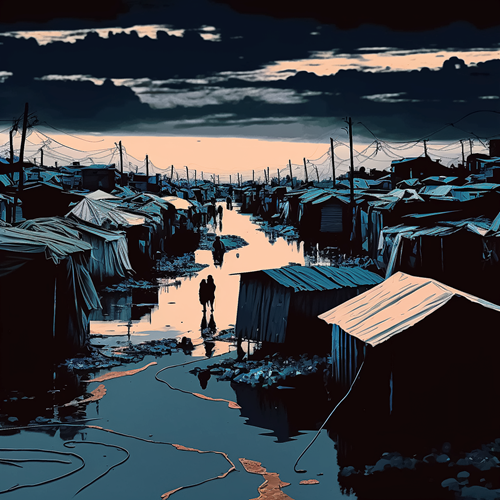
Global Displacement Forecast
7 file(s)
The DRC Global Displacement Forecast 2023 Report, projects that the total number of people displaced will increase by 1.9 million in 2023 and an additional 3.5 million in 2024. This means that by 2024, the number of displaced people will have more than doubled since 2015 and increased by more than 50 million. The gap between humanitarian needs and funding has grown to an all-time high with a 23 billion USD gap in 2022. These are some of the conclusions in DRC’s new Global Displacement Forecast report that covers 26 countries.

“The number of people being displaced is increasing by the minute. We need to act now otherwise the situation will go from bad to worse. At the same time, we are unfortunately, at a global level, witnessing a huge gap between increasing humanitarian needs and the available funding with a 23 billion USD discrepancy in 2022 – the highest gap ever”, says Charlotte Slente, Secretary General of the Danish Refugee Council (DRC).
The report highlights how displacement tends to occur in situations where there is a crisis in governance and where there are problems in several areas, such as ongoing conflicts and violence against civilians, exacerbated by the challenges of climate change and environmental degradation. As a result, in the future, the number of displaced people is expected to increase, especially in these complex situations with several ongoing crises.
“We need to face the fact that the crises are not going away on their own. This is our third Forecast report, and it shows that the number of displaced persons is increasing very rapidly along with the number of conflicts and climate change related problems. As the recent earthquake in Turkey/Syria evidenced, displaced populations are particularly vulnerable to natural hazard. There is a need for additional funding to address the adverse impacts of climate change and environmental degradation. If we want to respond to and reduce displacement, we need to address the triggers and root causes which lead to displacement - and which keep people in displacement. Conflict resolution and peace-building efforts must be accelerated”, says Charlotte Slente.
On top of shrinking funding and growing humanitarian needs, the operating environment for humanitarian actors is becoming more complex and characterized by reduced access and increased response costs. In the countries with the highest cost of responding to people in need of humanitarian assistance, the number of displaced people is estimated to grow to a larger extent than in countries with low response costs.
“We need to ensure better and more equal responsibility-sharing for the world's displaced. The report makes it very clear that displacement disproportionally affects poorer countries and areas that already have enough problems to deal with. A fundamental change of approach is therefore required to address the needs which arise as a result and to accelerate efforts to reduce and prevent the various causes that trigger displacement. 'Foresight' is useful, as it allows us to prevent and intervene with help, as early as possible. But it requires that the international community steps up with extra support to the countries that are most affected by displacement”, says Charlotte Slente.

7 file(s)
The report builds on displacement forecasts made with the Foresight model – an artificial intelligence (AI) model developed together with IBM to predict future forced displacement more accurately.
DRC uses the Foresight model to support country operations and the wider humanitarian system with more accurate forecasts for strategic planning for better prevention, response to and protection of displacement-affected populations.
A broader objective of this report is to show the opportunities for humanitarian actors to use artificial intelligence and machine learning in their work.
In addition to the forecasts, the illustrations in this report have been generated using AI software.